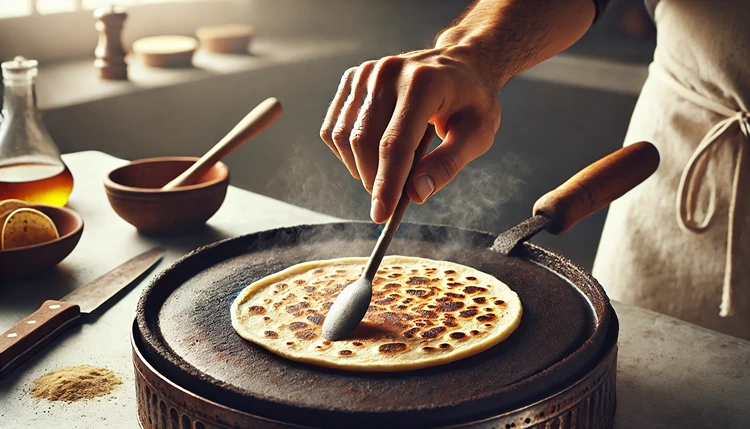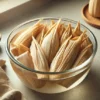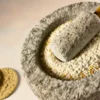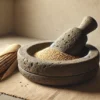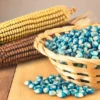Maize tortillas are one of the most iconic foods in Mexican cuisine, but did you know their history dates back to the Aztecs? The Aztecs were experts at using maize, or corn, as a staple in their diet. Today, we still enjoy tortillas much like they did, but the traditional process was much more intricate. Let’s explore how the Aztecs made these beloved tortillas, focusing on their techniques, tools, and the cultural importance of this ancient staple.
What is Maize, and Why Was It So Important to the Aztecs?
Maize was more than just a crop for the Aztecs—it was a cornerstone of their culture and survival. Often referred to as “corn” today, maize was central to their agriculture and their daily diet. For the Aztecs, maize wasn’t just a food source; it was considered a gift from the gods, particularly the god Centeotl, the deity of maize and sustenance.
Maize was highly versatile, and the Aztecs used it to make a variety of dishes, but tortillas stood out as a daily essential. The process of making these tortillas wasn’t as simple as grinding up corn and pressing it into flat rounds. It involved a deep understanding of how to treat maize to make it nutritious and easy to cook with.
Helpful Hint:
The Aztecs believed maize was sacred. This reverence extended to how they prepared it, often taking care to follow traditional practices that elevated the nutritional value of the corn, such as nixtamalization (more on that later!).
How Did the Aztecs Prepare the Maize for Tortillas?
The Aztecs followed a unique process called nixtamalization to prepare maize. Nixtamalization involved soaking the dried corn kernels in a solution of water and lime (calcium hydroxide), which softened the corn and made it easier to grind. This process also made the maize more nutritious by releasing essential vitamins like niacin (vitamin B3) and allowing for easier digestion.
“The technique of nixtamalization wasn’t just practical; it was a culinary breakthrough that allowed maize to become the backbone of the Aztec diet.”
Steps for Nixtamalization
- Soak the maize: The Aztecs soaked the dried kernels in water mixed with lime, often overnight, to break down the tough outer shell of the maize.
- Cook the maize: After soaking, the kernels were boiled until soft. This step was crucial for making the maize pliable enough for grinding.
- Rinse and grind: The softened maize was then rinsed thoroughly to remove the lime and any remaining husks. After rinsing, the kernels were ground into a soft dough known as masa.
Without nixtamalization, tortillas would lack the softness and flexibility they’re known for today. More importantly, this process made the tortillas nutritionally dense, something the Aztecs likely understood on an intuitive level.
What Tools Did the Aztecs Use to Make Maize Tortillas?
The process of making tortillas required special tools, many of which were simple yet incredibly effective. The two most important tools in traditional tortilla-making were the metate and the comal.
Metate: The Ancient Corn Grinder
A metate is a large, flat stone used for grinding maize into masa. The Aztecs used this tool by placing the soaked maize on the surface and grinding it with a rolling stone called a mano. The rhythmic grinding action created a fine, pliable dough that could be shaped into tortillas.
Metates were an essential part of every Aztec household. Even today, some traditional Mexican homes still use this ancient tool for grinding corn. It took a lot of effort to grind the maize by hand, which is why tortilla-making was often considered a labor of love.
Comal: The Tortilla Griddle
Once the masa was ready, the Aztecs used a comal, a flat clay griddle, to cook the tortillas. The comal was typically heated over an open flame, and its surface was perfect for evenly cooking the tortillas until they developed the slightly crisp edges we all know and love.
Traditional Maize Tortilla Tools and Their Modern Substitutes
| Traditional Tool | Modern Substitute | Purpose |
|---|---|---|
| Metate (Grinding Stone) | Food Processor or Blender | Grinding soaked maize into dough |
| Comal (Clay Griddle) | Cast-Iron Skillet or Griddle | Cooking the tortillas evenly |
| Mano (Hand Grinder) | Tortilla Press | Flattening the tortillas to an even thickness |
| Nixtamalization Process | Pre-made Masa Harina | Preparing corn for tortilla dough |
How Were Maize Tortillas Cooked and Used in Daily Aztec Life?
Once the dough was prepared and the comal heated, the tortillas were formed by hand and placed directly onto the griddle. The Aztecs would press the dough between their palms, rotating it to achieve a thin, even round. Some experts believe they used simple wooden presses, but most tortillas were made entirely by hand.
Tortillas were a daily staple in the Aztec diet. They were served with almost every meal, used to scoop up stews, beans, or wrapped around grilled meats and vegetables. Tortillas also had ceremonial value in religious rituals, offered to the gods as a token of gratitude for a bountiful harvest.
Why Were Tortillas So Important to Aztec Culture?
Tortillas weren’t just food for the Aztecs—they were a key part of their identity. In many ways, tortillas symbolized life and sustenance. In fact, maize itself was tied to the Aztec creation myths. According to their beliefs, humans were made from maize by the gods. This reverence for maize meant that tortillas weren’t just consumed for their nutritional value; they were sacred, representing a deep connection between the people, the earth, and their gods.
Beyond their religious significance, tortillas were incredibly practical. They were portable, which made them an ideal food for laborers and warriors. During long campaigns or hunting trips, Aztec soldiers would carry tortillas with them to eat on the go, often with a bit of dried meat or beans. These flatbreads were versatile and could be served with a variety of other dishes or eaten alone.
How Did Tortillas Influence Social and Economic Life?
The making of tortillas also had a social element, as it was often a communal activity. Women were primarily responsible for grinding the maize, making the dough, and cooking the tortillas. This daily process helped to build a sense of community, with families and neighbors often working together to prepare meals.
Tortillas were not just eaten at home, though. They were frequently sold in markets, becoming an important part of the economy. Women would prepare tortillas in their homes and take them to the bustling Aztec marketplaces, where they were traded alongside other essential goods like beans, cacao, and vegetables.
Helpful Hint:
In modern times, tortillas are still a staple in Mexican households. If you want to experience a bit of the Aztec tradition, try making your own tortillas from scratch using masa harina, a type of flour made from nixtamalized maize.
How Has the Process of Making Maize Tortillas Evolved Over Time?
While the basic method of making tortillas hasn’t changed much, modern technology has certainly made the process easier. Today, you can find mass-produced tortillas in grocery stores all over the world, thanks to industrialized processes that have replaced traditional hand-grinding and cooking techniques. However, some traditional Mexican communities still make tortillas by hand, preserving the ancient techniques passed down through generations.
The Introduction of Tortilla Presses
One significant change in the process is the use of tortilla presses, which have become more common in modern kitchens. These presses make it easier and faster to shape the tortillas, but the result is still a delicious and authentic product. Tortilla presses are typically made of wood or metal and can create perfectly round tortillas with just a quick squeeze. While the Aztecs likely made their tortillas entirely by hand, presses are now widely used, especially in larger households or businesses that make tortillas in bulk.
Modern Ingredients and Variations
Another major change is the variety of ingredients now used to make tortillas. While the Aztecs stuck to maize, modern tortillas come in a range of flavors and types. Wheat flour tortillas, for instance, have become incredibly popular, particularly in Northern Mexico and the United States. You can also find tortillas made with alternative grains, like quinoa or amaranth, to cater to modern dietary preferences.
Despite these innovations, maize tortillas remain a beloved part of Mexican cuisine. Whether they’re made in a traditional Aztec style or with the help of modern conveniences, tortillas are still a symbol of culture, history, and community.
Making Traditional Maize Tortillas at Home
Want to try making your own traditional maize tortillas at home? While it may seem daunting, the process is simpler than you might think, especially if you have the right tools and ingredients. Below is a simple recipe you can follow to make tortillas from scratch using modern ingredients like masa harina.
Traditional Maize Tortillas
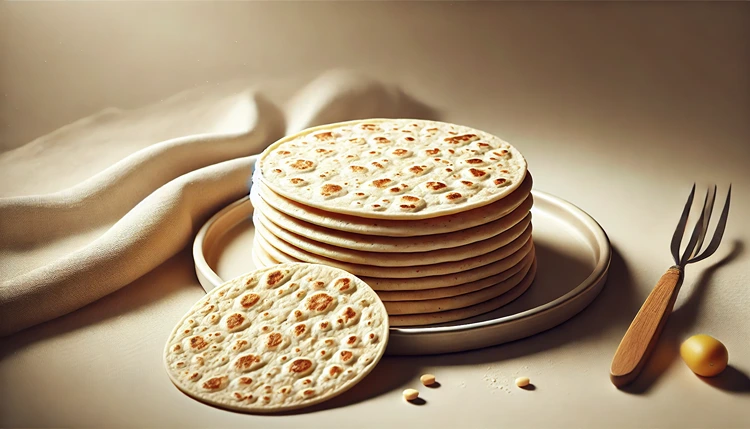
Ingredients
- 2 cups masa harina (corn flour made from nixtamalized maize)
- 1 ½ cups warm water
- Pinch of salt
Instructions
- In a mixing bowl, combine the masa harina and a pinch of salt.
- Gradually add warm water, mixing the dough with your hands until it comes together. The dough should be soft but not sticky.
- Divide the dough into 8 equal portions and roll each portion into a ball.
- Using a tortilla press or your hands, flatten each ball into a thin round tortilla.
- Heat a skillet or griddle over medium heat. Place each tortilla onto the hot surface and cook for 30-45 seconds on each side, until small brown spots appear.
- Keep the tortillas warm in a towel until ready to serve.
Notes
For best results, use fresh masa harina and serve the tortillas immediately while they’re warm and pliable. You can also store leftover tortillas in a sealed container for up to two days.
Are There Any Health Benefits to Maize Tortillas?
Yes! Because of the nixtamalization process, maize tortillas are highly nutritious. This ancient technique helps release essential nutrients from the corn, including calcium, magnesium, and vitamin B3 (niacin). The result is a food that’s not only delicious but also packed with health benefits.
Compared to modern processed foods, maize tortillas are naturally gluten-free and low in fat, making them a great option for people with dietary restrictions or those looking for a healthier alternative. They’re also a great source of fiber and plant-based protein, especially when paired with beans, another Aztec staple.
How Do Maize Tortillas Compare to Wheat Tortillas?
While wheat tortillas are softer and more pliable, maize tortillas are considered the more authentic choice in traditional Mexican cuisine. Wheat tortillas have a higher caloric content and are less nutritionally dense, while maize tortillas offer more vitamins and minerals due to the nixtamalization process. Many people prefer maize tortillas for their earthy, slightly sweet flavor and chewy texture, which makes them perfect for dishes like tacos and quesadillas.
FAQs
Wrapping Up
The traditional Aztec method of making maize tortillas is an ancient practice that has stood the test of time. This process, which involves nixtamalizing the corn and using simple tools like the metate and comal, created tortillas that were not only a staple food but also a symbol of life and sustenance in Aztec culture. Even today, maize tortillas are celebrated for their rich flavor, nutritional value, and versatility in Mexican cuisine.
While modern technology has made it easier to produce tortillas, the original techniques offer a unique connection to the past, preserving a cultural tradition that is still very much alive. Whether you’re using a tortilla press or grinding maize by hand, making your own tortillas allows you to experience a slice of history and enjoy a truly authentic taste of Mexico.

